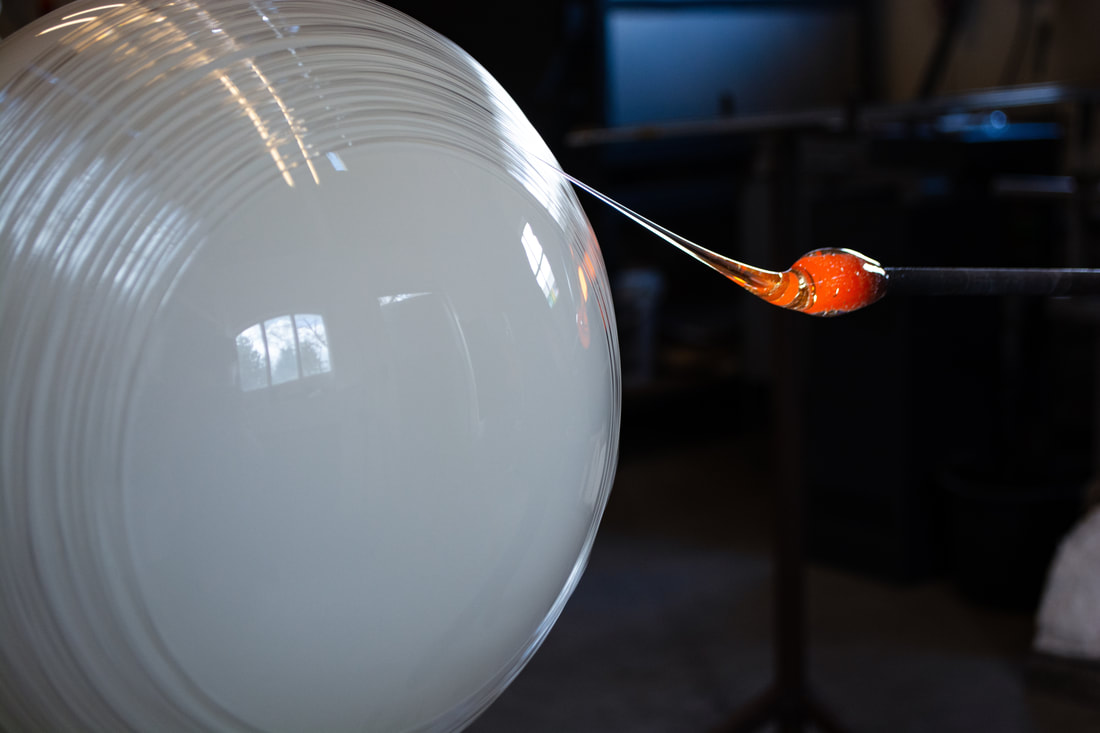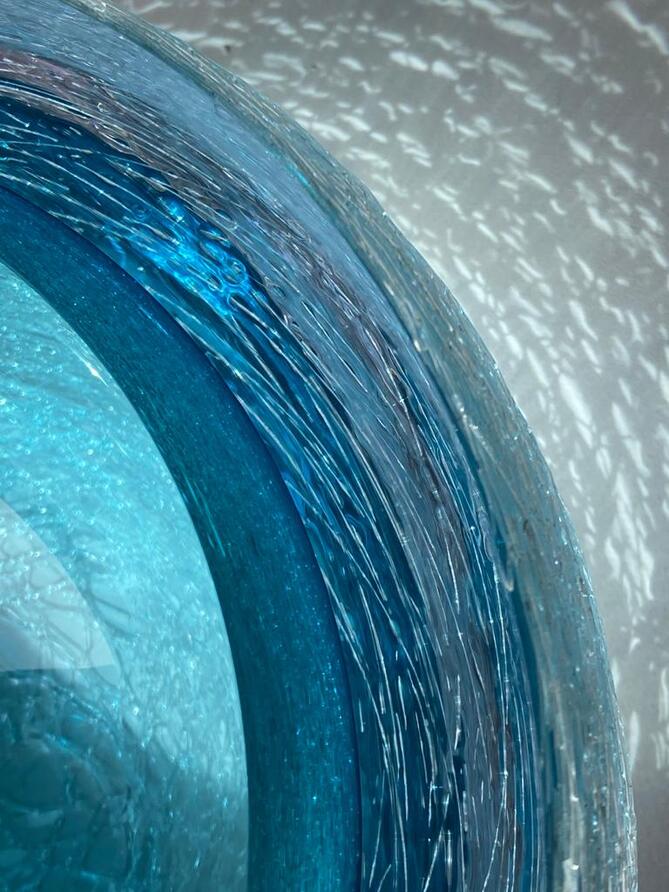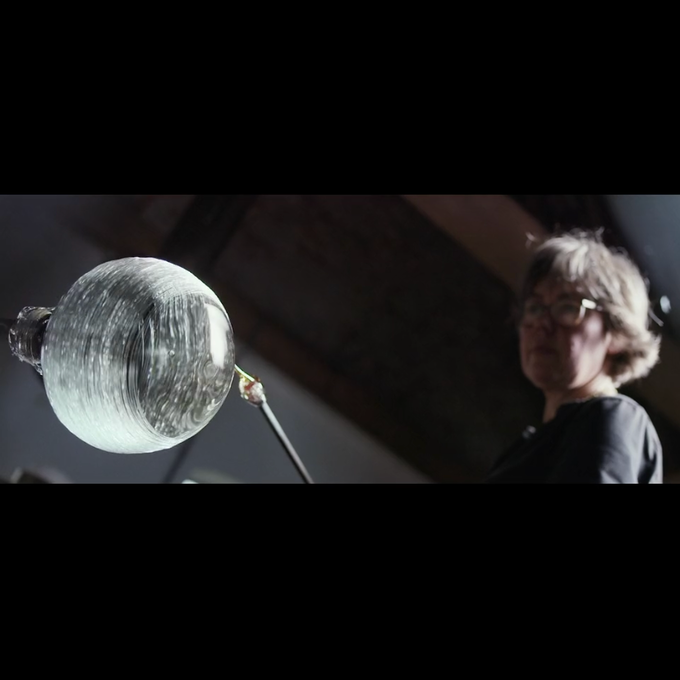|
The free nature of hot glass allows the artist to experiement and play with ideas. By mastering the technique and controlling all the steps of glassblowing, Bibi is able to trasform mistakes and unexpected accidents into new ideas. In this conversation, the artist suggest the stories behind what she calls 'happy accidents'. Matilde Bignotti: In previous conversations we talked about series that were inspired by a specific theme, as the boats and the cocoons, or stand as metaphors for your feelings, such as the Houses. Could you give an example of a piece or series that developed unexpectedly from free experimentation with the material? BS: I usually talk about the Crinkled glasses as these pieces are a perfect example of ‘happy accidents’. One day I heated the glass bubble on the blow pipe too long and the glass nearly collapsed in a wrinkled way. I thought I could control that mistake, making the glass fold how I wanted turning the mistake into a series of glasses. MB: This reminds me of our previous conversation about your experience at Lindeal Mill. Does your confidence with the material play a role in your attitude towards these ‘accidents’? BS: It surely does. Instead of feeling discouraged by mistakes, I am able to control the process and play with the material. Another good example of a technique developed from experimentation happened a long time ago while I was working in Leerdam, in the Glasblazerij, part of the museum. For a week, artists were invited to blow glass and the museum’s visitors could come and watch as there was a big seating capacity. I was sitting there, experimenting, while somebody with a microphone was explaining to the audience what I was doing. Which is hilarious because, you don’t even know yourself what it is that you are doing! MB: Oh, it sounds like a stressful situation. What did you make? BS: Yes, it was! So, to level down the pressure I started to play with the glass and make silly things. Mangoes in glass, big ugly birds, jellyfish and octopuses. I wanted to give the octopuses a more interesting texture so, I started to pull the glass and make threads around piece. Turn after turn, I started to appreciate the way these thin glass threads were reflecting the light and changing the nature of the pieces. Later I started to explore this technique. I made the threads thicker, thinner, I made crisscrossed and parallel threads. That day at the Glasblazerij, in theory I was making ugly work, I didn’t expect the threads to come out. MB: I see the threads as a sort of signature of your art style. It is the technique that makes the Fruits luminous and emphasize the movement of glass and the ‘alive’ nature of glass in most of your pieces! Thank you for sharing these stories.
1 Comment
Leave a Reply. |
|



